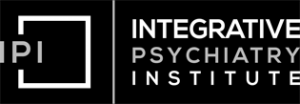
Holotropic Breathwork is an alternative therapeutic approach that involves deep, rhythmic breathing to induce non-ordinary states of consciousness. Developed by psychiatrist Dr. Stanislav Grof and his wife Christina, this practice has gained significant attention for its use of inducing non-ordinary states without the use of psychedelics.
As research continues to expand in the field of alternative therapies, more individuals are discovering the potential benefits and transformative experiences non-ordinary state modalities offer, such as Holotropic Breathwork and Psychedelic Therapy. It is an exciting time as we witness a growing convergence of science, spirituality, and alternative approaches to mental health.
What is Holotropic Breathwork?
Holotropic Breathwork, also known as holotropic breathing, is a therapeutic practice that involves controlled and accelerated breathing to induce non-ordinary states of consciousness. Developed by psychiatrist Dr. Stanislav Grof and his wife Christina, this approach aims to increase self-awareness and facilitate emotional healing and personal growth.
The technique of Holotropic Breathwork involves deep, rhythmic breathing, often accompanied by evocative music and bodywork. During a session, individuals engage in intense and rapid breathing patterns, which can lead to altered states of consciousness characterized by expanded awareness and heightened sensations.
Core principles and techniques involved
Breathwork techniques are utilized in various contexts and practices, offering a versatile tool for personal growth, healing, and well-being. Here is some common areas where basic principles of breathwork is used:
- Holotropic Breathwork: As previously discussed, Holotropic Breathwork is a specific therapeutic approach developed by Dr. Stanislav Grof. It serves as a powerful method for exploring non-ordinary states of consciousness and facilitating emotional healing and personal transformation.
- Meditation Practices: Many meditation traditions incorporate breathwork as a fundamental aspect of their practice. Techniques such as mindful breathing, pranayama in yoga, and Zen Buddhist breath awareness are used to cultivate presence, mindfulness, and deepen the meditative experience.
- Stress Reduction and Relaxation: Deep breathing exercises are widely recognized for their ability to induce relaxation and reduce stress. By consciously regulating the breath, individuals can activate the body’s relaxation response, calming the nervous system and promoting a sense of calm and well-being.
- Mindfulness-Based Therapies: Breathwork is often integrated into mindfulness-based therapies such as Mindfulness-Based Stress Reduction (MBSR) and Mindfulness-Based Cognitive Therapy (MBCT). These approaches utilize breath awareness and focused breathing exercises as part of the overall treatment to cultivate present-moment awareness and support emotional regulation.
- Energy Work and Healing Modalities: Breathwork is employed in various energy healing practices and modalities such as Reiki, Qi Gong, and Pranic Healing. In these practices, conscious breathing is used to circulate and balance life force energy (often referred to as chi or prana) throughout the body, promoting physical, emotional, and energetic well being.
- Performance Enhancement: Athletes, musicians, and performers often utilize breathwork techniques to optimize their performance. By harnessing the power of breath control, individuals can enhance focus, increase energy levels, and manage anxiety or stage fright.
- Self-Exploration and Personal Growth: Breathwork can be used as a tool for self-exploration, personal growth, and expanded consciousness. Through various breathwork practices, individuals can access altered states of awareness, tap into their inner wisdom, and explore and integrate aspects of their psyche.
- Trauma Healing: Breathwork is increasingly recognized as an effective modality in trauma healing and resolution. Techniques such as Somatic Experiencing, Integrative Breathwork, and Transformational Breathwork are utilized to support individuals in safely processing and releasing traumatic experiences stored in the body.
The importance of deep rhythmic breathing in these practices
Deep, rhythmic breathing holds immense importance in breathwork practices. By consciously engaging in deep, rhythmic breaths, individuals can tap into the body’s innate relaxation response and regulate the nervous system. This intentional breathing pattern signals to the brain that we are safe, promoting a state of calm and reducing anxiety.
It also increases oxygenation, providing vital energy to the body and supporting overall physical health. Deep, rhythmic breathing is a gateway to altered states of consciousness, allowing individuals to explore non-ordinary realms of experience and access deeper levels of intuition and creativity.
Enhanced Mind-Body Connection
Deep rhythmic breathing serves as a powerful bridge between the mind and body during breathwork practices. As individuals consciously engage in slow, rhythmic breaths, they activate the body’s relaxation response and encourage a state of calm.
This heightened mind-body connection allows for a deeper exploration of physical sensations, emotional states, and energetic shifts within the body. By attuning to the breath, individuals become more aware of the subtle changes and signals occurring within themselves, facilitating a greater understanding and integration of their overall well-being.
Stress Reduction and Emotional Regulation
Deep rhythmic breathing is an effective tool for reducing stress and promoting emotional regulation. By engaging in slow and intentional breaths, individuals activate the parasympathetic nervous system, which counterbalances the body’s stress response. This physiological shift triggers a cascade of relaxation-inducing processes, such as reduced heart rate and blood pressure, and increased feelings of calmness and emotional stability.
Through regular practice, deep rhythmic breathing helps individuals build resilience to stress, improve emotional regulation, and cultivate a greater sense of inner peace and balance.
The Healing Potential of Holotropic Breathwork
In the realm of Holotropic Breathwork, the concept of healing takes on a profound significance. This section delves into the multifaceted aspects of healing within this transformative practice. By examining the impact of deep, rhythmic breathing, we uncover how it acts as a catalyst for emotional release and inner transformation, paving the way for profound healing experiences.
Additionally, we explore the pivotal role of expanded states of consciousness in accessing deeper layers of healing, offering individuals the opportunity to address and integrate unresolved traumas and blockages.
Emotional Release and Inner Transformation
When engaged in the practice of Holotropic Breathwork, the deep, rhythmic breathing techniques employed play a pivotal role in facilitating emotional release and inner transformation. Here are some important points to note regarding this aspect:
- Oxygenation and energy flow: Deep, rhythmic breathing increases oxygenation in the body, enhancing the flow of vital energy. This influx of oxygen helps release tension and stagnant emotions, creating a space for emotional release and healing.
- Activation of the parasympathetic nervous system: By engaging in conscious, slow breathing, the parasympathetic nervous system is activated, promoting relaxation and reducing stress. This shift in the body’s physiological state creates an environment conducive to emotional exploration and processing.
- Accessing the subconscious mind: The altered state of consciousness induced by deep breathing can bypass the conscious mind and allow access to the subconscious. This can unveil suppressed emotions, memories, and patterns that may be contributing to emotional imbalances or blockages.
- Catharsis and emotional release: Through sustained deep breathing, individuals may experience cathartic moments, where pent-up emotions find an outlet for expression. This release enables individuals to process and integrate challenging emotions, leading to a sense of emotional liberation and relief.
Expanded states of consciousness
Expanded states of consciousness are a fundamental aspect of the profound healing potential found within Holotropic Breathwork. These altered states of awareness allow individuals to transcend their ordinary waking consciousness and delve into deeper levels of healing.
By breaking free from the limitations of everyday perceptions and thought patterns, individuals gain a broader perspective on themselves and their experiences.
In these expanded states, the subconscious mind becomes more accessible, revealing hidden memories, unresolved emotions, and traumas that may be at the root of emotional imbalances.
The Connection to Psychedelic Therapy
The field of psychedelic therapy has gained significant attention in recent years as a potential breakthrough in mental health treatment. The exploration of the therapeutic benefits of psychedelic substances, such as psilocybin and MDMA, has sparked profound interest among researchers, clinicians, and individuals seeking alternative approaches to healing.

Psychedelics and Breathwork
The relationship between breathwork and psychedelics sheds light on the interconnectedness of these modalities in the realm of consciousness expansion and healing. Throughout history, both practices have been utilized to induce altered states of consciousness and facilitate transformative experiences.
Breathwork, in various forms, has been utilized for centuries as a means of accessing deeper levels of consciousness and promoting healing. These practices aim to activate the body’s natural healing mechanisms, release emotional blockages, and expand one’s perception of reality.
How Holotropic Breathwork Shares Similarities to the Psychedelic Experience
Holotropic Breathwork has been recognized as a complementary practice or in place of psychedelic therapy. Here are four key points that highlight how Holotropic Breathwork work in conjunction or as an alternative to psychedelic experiences:
- Accessing Altered States: Holotropic Breathwork can induce altered states of consciousness similar to those experienced during psychedelic journeys. Through deep and intentional breathing techniques, individuals can enter into non-ordinary states of awareness, where emotions and memories from the subconscious mind can surface.
- Amplifying Mindfulness and Presence: Holotropic Breathwork cultivates a heightened sense of mindfulness and presence, similarly to the psychedelic experience. By focusing on the breath and staying attuned to the present moment, individuals are better able to navigate and integrate intense sensations and emotions.
- Emotional Release and Healing: Holotropic Breathwork can create a safe and supportive environment for emotional release and healing, which can be especially beneficial during psychedelic experiences or in place of. The deep breathing techniques employed in Holotropic Breathwork can help individuals access and process suppressed emotions, traumas, and unresolved issues.
- Integration and Grounding: Holotropic Breathwork provides a structure for integration and grounding after the psychedelic experience. The practice emphasizes the importance of processing and integrating the insights and experiences gained during altered states of consciousness into daily life.
The Synergistic Benefits
The synergistic benefits of combining breathwork with psychedelic therapy are profound, offering a unique and powerful approach to healing and transformation. Breathwork techniques, such as Holotropic Breathwork, can be employed as a complementary practice after psychedelic therapy sessions, amplifying the therapeutic effects and deepening the overall experience.
Enhanced Self-Exploration and Insight
Combining breathwork with psychedelic therapy can enhance self-exploration and insight by synergistically amplifying the introspective aspects of both modalities. The intentional breathing techniques employed in breathwork can help individuals access deeper levels of consciousness, allowing for a more profound exploration of the self during the psychedelic experience.
Deepened Emotional Healing and Trauma Resolution
The integration of breathwork with psychedelic therapy deepens emotional healing and trauma resolution. Breathwork techniques, such as Holotropic Breathwork, can induce cathartic experiences that facilitate the release and processing of unresolved emotions and traumatic memories.
When combined with the profound emotional opening and heightened receptivity to therapeutic insights induced by psychedelics, this combination creates a powerful synergy that supports individuals in confronting and healing deep-seated emotional wounds. The integrated approach provides a safe and supportive space for individuals to work through their traumas, leading to transformative healing and a sense of emotional liberation.
Spiritual Connection and Transpersonal Experiences
Breathwork opens the door to profound spiritual connection and transpersonal experiences. Both psychedelic therapy and breathwork have been associated with transcendent states of consciousness.
Safety and Precautions
Practicing Holotropic Breathwork safely is essential to ensure a positive and beneficial experience. Here are some guidelines, potential risks, and contraindications to consider, as well as the importance of working with trained facilitators:
Guidelines for Practicing Holotropic Breathwork Safely:
- Create a Safe and Comfortable Environment: Find a quiet, private space where you can engage in the practice without distractions or interruptions. Ensure the room is well-ventilated and comfortable.
- Stay Hydrated: Drink plenty of water before and after the session to stay hydrated throughout the breathwork practice.
- Listen to Your Body: Pay attention to any discomfort or physical sensations during the session. If you experience pain, dizziness, or any other concerning symptoms, slow down or stop the practice altogether.
- Work with a qualified Holotropic Breathwork Facilitator: Always work with a qualified facilitator. Breathwork is powerful and not something to experiment with on your own.
Potential Risks and Contraindications:
- Emotional Intensity: Holotropic Breathwork can bring intense emotions and memories to the surface. It’s essential to be prepared for these experiences and have support mechanisms in place if needed.
- Physical Health Conditions: Individuals with certain respiratory issues, cardiovascular problems, high blood pressure, aneurysms, or epilepsy should consult with a healthcare professional before engaging in breathwork practices.
- History of Mental Health Concerns: People with a history of severe mental health issues, such as psychosis or schizophrenia, or those who are currently on certain psychiatric medications, should exercise caution and seek guidance from a qualified professional before participating in Holotropic Breathwork.
Final Thoughts
Holotropic Breathwork serves as a catalyst for accessing altered states of consciousness, allowing for deep introspection and emotional release. When practiced alongside or in place of psychedelics, this combination creates a synergistic effect, accelerating personal growth and facilitating a stronger connection with oneself and the world.







